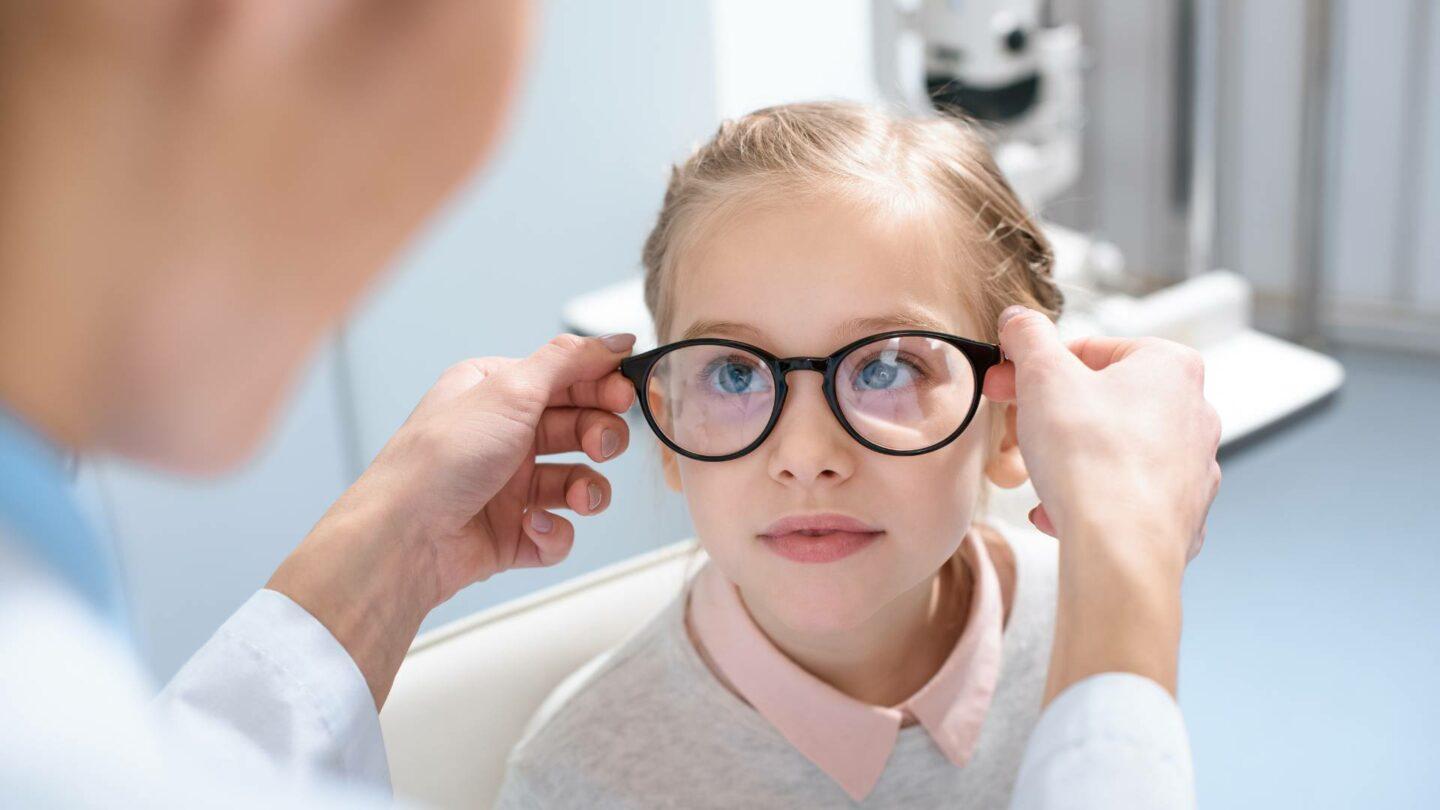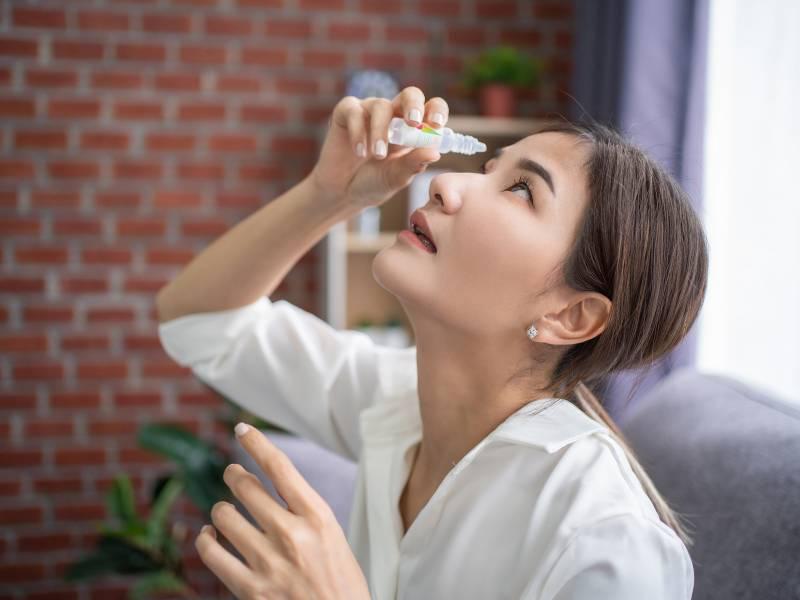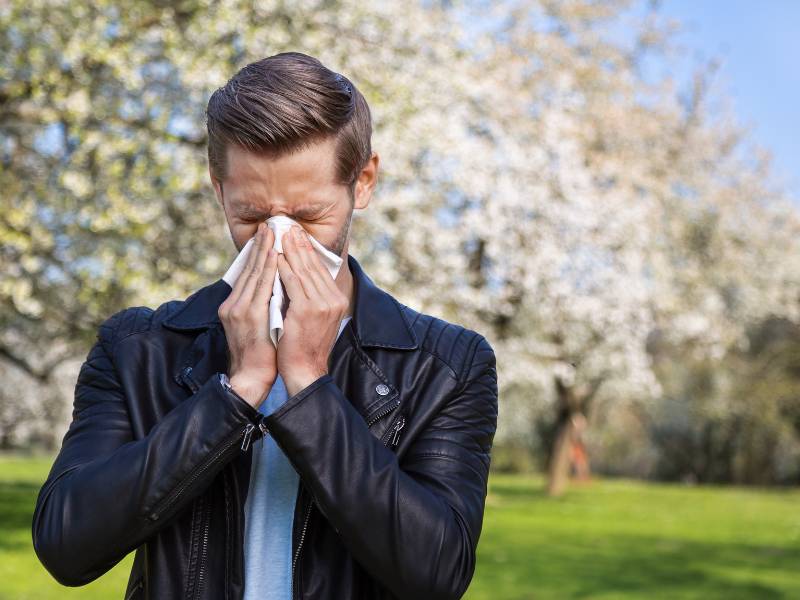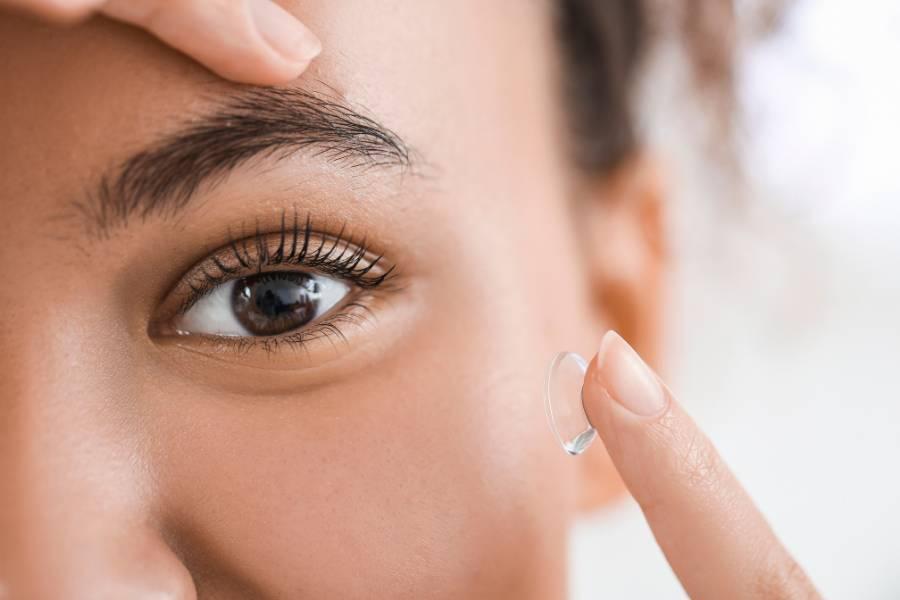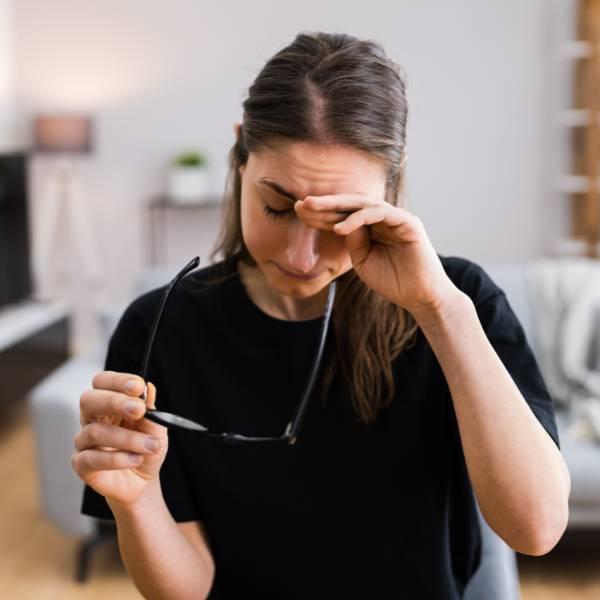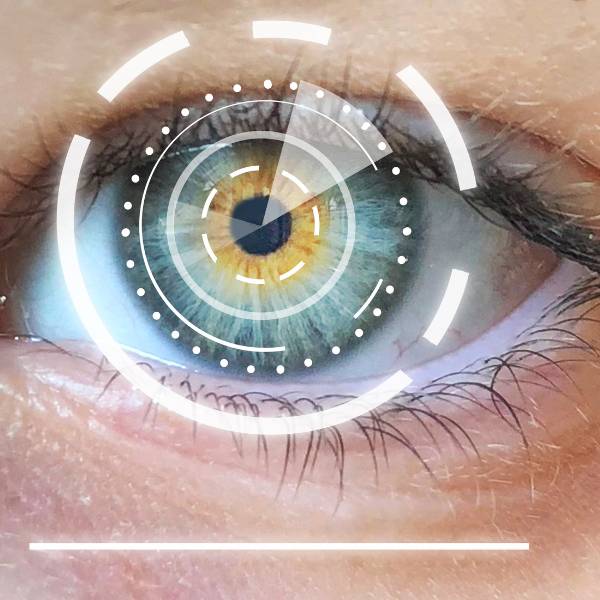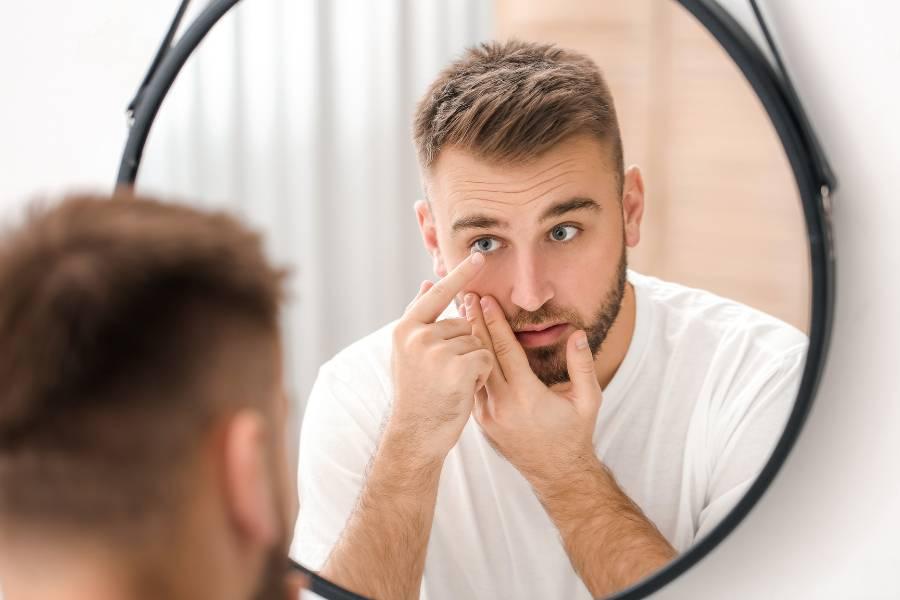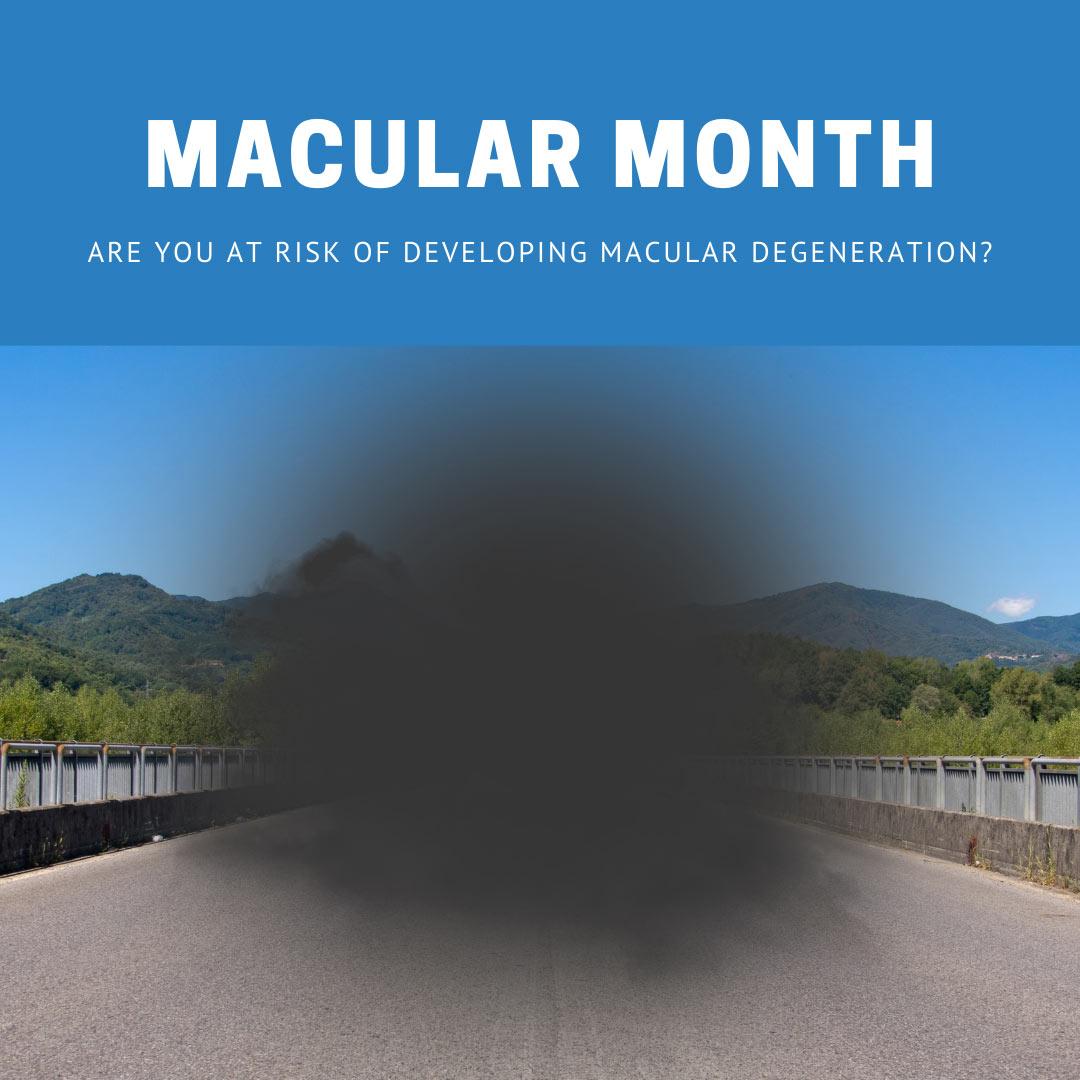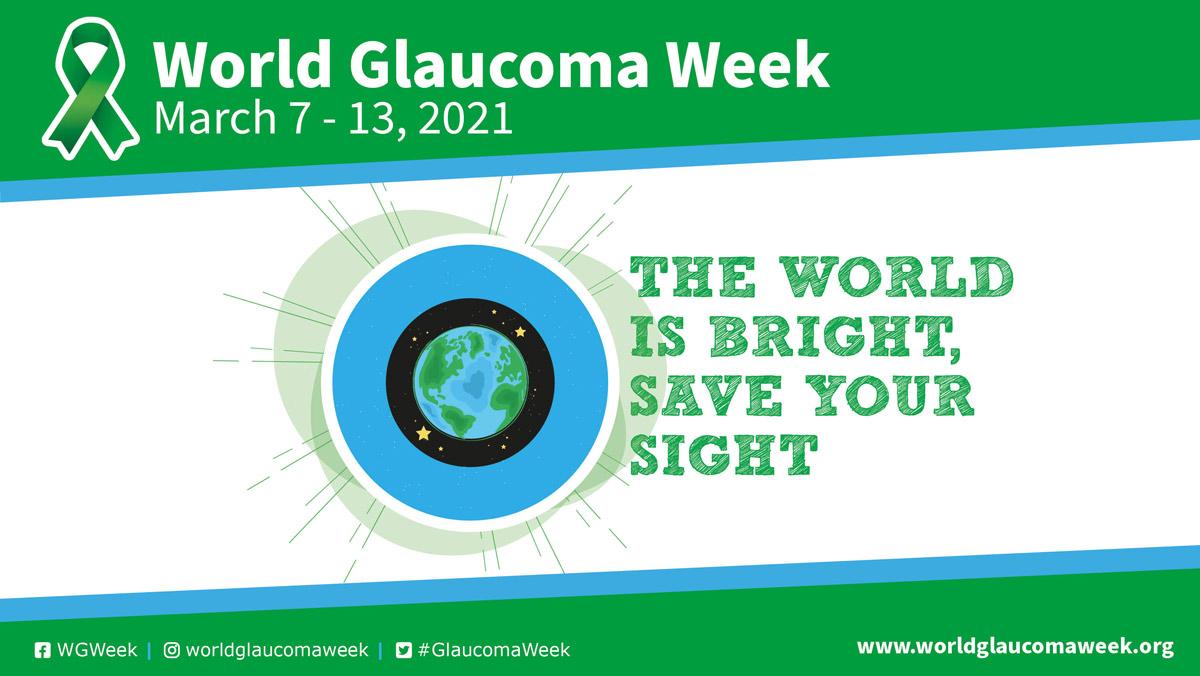Performance and Eye Protection
In the world of sports and physical activities, having the right equipment is essential for optimal performance and safety. However, one critical component that often gets overlooked is sports eyewear.
Performance Enhancement
- Visual Clarity: Sports-specific eyewear, such as polarized sunglasses, improves visual clarity by reducing glare and enhancing contrast, enabling athletes to excel even in challenging conditions.
- Eye Protection: Sports eyewear acts as a shield, protecting your eyes from dust, debris, and harmful UV rays, allowing you to focus on your performance without worries of eye damage.
Safety First
- Preventing Eye Injuries: Sports eyewear acts as a protective barrier, safeguarding your eyes from flying objects or accidental contact with others, reducing the risk of eye injuries.
- UV Protection: Proper UV-protective sports eyewear shields your eyes from harmful rays, minimizing the risk of conditions like cataracts and macular degeneration.
- Dust and Debris: Outdoor sports expose your eyes to wind, dust, and debris, leading to irritation. Sports goggles or sunglasses with proper seals reduce this risk and prevent potential infections.
Sports eyewear is a crucial part of your sports gear, enhancing performance while keeping your eyes safe. Whether you're a professional athlete or enjoy recreational sports, investing in appropriate sports-specific eyewear ensures a better experience. Prioritize eye safety and visual clarity, and perform at your best with confidence. Remember, your eyes deserve the best protection!
Eye Strain and Screens: A Modern Dilemma
In today's fast-paced world, screens have become an integral part of our lives. Whether for work, education, or entertainment, we find ourselves constantly connected to smartphones, computers, tablets, and televisions. However, this digital revolution has brought an unexpected cost: eye strain.
Factors Contributing to Eye Strain
- Blue Light: Screens emit blue light that can disrupt our sleep-wake cycle, causing digital eye strain.
- Screen Glare: Reflections and glares force our eyes to work harder, leading to fatigue.
- Digital Device Usage: Prolonged use without breaks strains our eyes.
- Poor Lighting and Viewing Distance: Inadequate lighting and improper viewing distance contribute to eye strain.
Tips to Reduce Eye Strain
- Follow the 20-20-20 Rule: Take a 20-second break every 20 minutes to focus on an object 20 feet away.
- Proper Lighting: Ensure adequate lighting to avoid screen glare.
- Adjust Screen Settings: Reduce brightness and adjust contrast for comfort.
- Use Blue Light Filters: Consider using blue light filter apps or glasses.
- Maintain the Right Distance: Position screens at arm's length and eye level.
Prevention is key to avoiding long-term problems. Balancing screen time with breaks and outdoor activities can significantly improve eye health in this digital age. Prioritize eye care for a healthier and more enjoyable digital experience.
The Forgotten Winter Accessory
As the days get shorter and temperatures start to drop, it's easy to forget about the importance of wearing sunglasses. But don't let the cold weather fool you: sunglasses are just as necessary in winter as they are in summer. Not only do sunglasses protect your eyes from harsh UV rays, but they also provide many other benefits that are especially important during the winter months.
Sunglasses are important for protecting your eyes from the cold weather
Windy days and chilly temperatures can cause irritation, and sunglasses can help to protect your eyes by blocking out the wind. Additionally, sunglasses can help prevent snow blindness, a condition caused by exposure to snow's ultraviolet light.
Get the best out of it
Sunglasses are a great way to stay fashionable in the winter months. It's easy to get stuck in a rut of wearing the same hat, scarf, and coat every day, but a nice pair of sunglasses can help spice up your look. Whether you prefer classic aviators or fashionable cat eyes, sunglasses can be a fun and stylish way to add a little something extra to your winter wardrobe.
Grab your favourite pair of shades and head out into the cold—your eyes will thank you.
Why do my eyes get dry in winter?
Why do my eyes get dry in winter?
Winter is a time when many people suffer from dry eye syndrome. Dry eye can be a very uncomfortable condition, causing symptoms such as:
- Burning
- Stinging
- Redness
- Light sensitivity
- Blurred vision
For many people, winter is the worst time of year for dry eye as cold air, low humidity, and wind can exacerbate symptoms.
What are the treatments?
There are several treatments available to help manage dry eye. These include:
- Use artificial tears or eye drops to lubricate the eyes
- Increase the humidity of the environment
- Wear special glasses to block out the wind
In some cases, lifestyle changes such as avoiding smoking, reducing screen time, and wearing sunglasses may help reduce the symptoms of dry eye. In more serious cases, prescription medications or surgery may be necessary.
If you are suffering from dry eye, it is important to see your Optometrist for a proper diagnosis. Your Optometrist can help determine the underlying cause of your dry eye and recommend the best treatment for your condition.
Does my prescription need updating?
It is recommended to get an eye test once every two years, but during that time, it is possible that you perfect prescription may change. It can be difficult to notice the effects of an incorrect prescription, however, there are a few signs that your prescription may no longer be suitable for your eyes.
- Blurred Vision
This is the first and most obvious sign that your current prescription may not be working for you. If you are experiencing fuzzy or unclear vision while wearing your eyeglasses, it may be time for a new prescription.
- Your eyes feel tired
Eye fatigue can feel like your eyes are dry or you may interpret eye fatigue as needing to sleep. But it could be that your prescription is no longer accurate.
- Frequent headaches
Headaches are a symptom of many different things, which can make it hard to pinpoint the cause. If you are experiencing frequent headaches and wear glasses, it is worth checking that your prescription is still working for you.
If you are unsure if an incorrect prescription could be causing you issues, it is best to visit your optometrist to find out for sure.
Get Back to School Ready
Have you added an eye test to the list of back-to-school jobs? Approximately 80% of the primary school curriculum in Australia is delivered visually. Therefore, the ability for a child to see clearly is paramount to giving them their best education. There are some tell-tale signs that a child might be experiencing visual difficulties.
- Frequently rubbing eyes
- Complaining of tired eyes
- Sitting close to the TV or a book
- Closing one eye to see better
- Consistent incoordination
- Frequent squinting
If you have noticed any of these behaviours in your child, it might be time for an eye test. A children’s eye test can help to detect common conditions such as:
Myopia: A Condition in which objects that are near appear clear, and object farther away look blurry.
Amblyopia (lazy eye): Reduced vision in one eye.
Convergence insufficiency: Can cause blurry and double vision
The optometrist will also test for issues in binocular vision, focusing, eye tracking and colour vision. Book an appointment with us today to get your children's eyes tested!
Dry eye in the warmer months
The symptoms of dry eye are not just prevalent in the winter months, dryness can also affect eyes in the spring and summer months, sometimes even more so. This is caused by increased exposure to the sun and other season factors including visiting the ocean and pools.
Relieving the effects of dry eyes during spring and summer
-
Always wear sunglasses
The UV protection that polarized sunglasses provide protect your eyes and reduce glare. This can help to reduce the onset of dry eye.
-
Wear a hat when outside
By the same token, wearing a hat to shield your eyes from the harsh rays of the sun adds another layer of protection.
-
Eye drops
There a multiple eye drops, both over the counter and prescribed that can help to ease the symptoms of dry eye.
-
Rest your eyes
Performing tasks such as reading, watching TV or being outside in direct sunlight for long periods of time and cause dryness in the eyes. It is important to take a break from these activities from time to time to give your eyes a rest.
-
Wash your hands
When spending time outdoors, your hands are exposed to pollens and irritants that can transfer to your eyes through touching and rubbing. Washing your hands regularly and avoiding touching your eyes can reduce redness and dry eye.
If you would like to discuss further treatment and prevention of dry eye during the warmer months, contact your optometrist today.
How your optometrist can help your hay fever
The irritation, itchiness and watery eyes that hay fever brings in the spring and summer seasons can be frustrating and affect your lifestyle. The constant rubbing can also lead to dryness and redness. Here’s how an optometrist can help you manage these symptoms of hay fever.
1.Non-prescription eye drops
Your optometrist can recommend over the counter eye drops depending on the symptoms and severity of your hay fever in relation to your eyes.
2. Prescription eye drops and medication
There are different types of prescription eye drops that an optometrists can provide for severe allergies such as antihistamine and anti-inflammatory eye drops.
3.Oral Antihistamines
In conjunction with eye drops, your optometrist may also recommend oral antihistamines to hep relieve hay fever symptoms.
Some other ways that you can help reduce the effect of hay fever on your eyes include:
- Wearing sunglasses when outside
- Use a dehumidifier in the house
- Keep your windows closed on high pollen days
- Wash your hands after exposure to pets, grass and other flora.
If you would like to discuss your options to treat the symptoms of hay fever in relation to your eyes, contact your optometrist today.
Top tips for better vision while driving at night
As winter arrives, driving at night becomes a more common occurrence. As a result, so do many of the common symptoms associated with night driving.
You know the feeling – tired eyes, haloes around street lights, sudden glare of oncoming traffic and wet, shiny streets.
With fatal accidents three times more likely to happen at night1, considering options for better vision when night driving can be very useful.
As we age, our pupils naturally become smaller. As a result, less light is able to enter the eye. This affects our colour recognition, our concept of how far away things are and reduces our side or peripheral vision.
Here are some helpful tips that can help to improve your night vision:
- Keep your glasses and the windscreen clean. Marks on either surface can create a halo effect around oncoming lights.
- Dim your dashboard lights
- Ensure you wear anti-reflective lenses as they allow more light to pass through to your eye, helping you to see more clearly. Standard lenses will reflect light, increase glare and reduce light transmission by almost 10%.
The importance of sunglasses during winter
Did you know that your eyes are susceptible to sunburn all year round? In fact, you may be at greater risk of damaging your eyes during the cooler months. Optometry Australia’s 2020 Vision Index revealed that over 75% of Australians don’t think that UV protective sunglasses are necessary for the winter months however this couldn’t be further from the truth.
Australia has one of the highest exposure levels of Ultraviolet (UV) Radiation in the world. UV radiation is emitted by the sun and exists in three forms:
- UVA – not absorbed by the ozone layer at all
- UVB – about 15% of UVB transmits through to the earth’s atmosphere
- UVC – absorbed by ozone and does not reach the earth’s surface
In terms of eye damage, it’s UVA and UVB rays that are concerning. 90% of UV radiation can penetrate clouds and that exposure can sometimes be made more intense due to reflections off these clouds. As the sun sits lower on the horizon in the winter months we are actually more exposed to those damaging UV rays, as they directly enter the eyes.
Another interesting fact is that UV exposure to the eyes is maximised between 8am to10am and 2pm to 4pm when the sun is lower in the sky often making these the most important times to be wearing your sunnies to protect from UV and give comfort from glare.
Eye problems arising from UV exposure
Too much winter sun without protective eyewear can potentially lead to:
- Photokeratitis – this is typically experienced by those who spend time in the snow and is often called snow blindness. The exposure to high doses of UV causes the cornea to become sunburnt.
- Cataracts – clouding of the eye leading to blurred and distorted vision
- Pterygium – typically experienced by surfers from overexposure to UV rays reflecting off the water’s surface. It results in a fleshy white-pink growth that can invade the cornea and disfigure the eye.
Sunglasses – a practical and fashionable solution
If you want to protect your eyes all year round (and you should!), simply wear a pair of quality sunglasses and in summer add a wide brim hat. If possible, look for lenses that are polarized as they offer greater protection as they cut down more reflections. All sunglasses sold in Australia must be tested and labelled according to the Australian Standards. This standard sets limits for the allowable UV transmission of sunglasses for adults and children. Your sunglasses should have a lens UV rating of at least 3. To know what the UV level is where you live, use the SunSmart app for live updates.
We offer a range of sunglasses to cater to your lifestyle needs. Whether it’s prescription sunglasses allowing you to see clearly when you’re outdoors or plano sunglasses if you’re a contact lens wearer or simply don’t require a prescription – we’ve got you covered.
Enhancing your lifestyle with contact lenses: FAQ
For those of you considering trying out contact lenses to enhance your lifestyle, here are some answers to frequently asked questions about contact lenses.
Can anyone use contact lenses?
Most people are eligible to use contact lenses. However, there are some prescriptions that are not suitable for contact lenses. It is best to check with your optometrist if contact lenses are right for you.
How long does it take for your eyes to get used to contacts?
It can take up to two weeks for your eyes to adjust to contact lenses. While your eyes adjust you may experience blurred vision and find yourself blinking more often than usual. The more you wear your contacts the quicker your eyes will adjust.
Can contact lenses get lost behind your eye?
Good news – it is impossible for the contact lens to get behind your eyeball and become trapped.
What is the difference between daily and extended wear contact lenses?
Daily wear contact lenses are disposed of daily after use. The benefit of daily wear contact lenses is there is no need to clean the lenses or by any solution as the lenses get disposed of after use.
Extended wear contact lenses can be worn anywhere from one week to one month depending on the type of contact. Extended wear contacts require a cleaning regimen to care for the contacts.
Can I sleep with contact lenses in?
Majority of contact lenses are not suitable to sleep in. There are some contact lens options that are approved for overnight use. It is bet to talk to your optometrist about which option is right for you.
Can I use contact lenses while playing sports?
Absolutely. One of the big advantages of wearing contact lenses is being able to use them while playing sport or when engaging in other physical activity. However it is not recommended to use contact lenses while swimming.
Do contact lenses expire?
Yes, they do. Even if the contacts haven’t been opened, they could still have expired. Make sure to always check the packaging for the expiration date.
How often do I need to update my contact prescription?
In Australia, contact lens prescriptions are valid for a maximum of 12 months. If your prescription is older than one year, it’s time for an eye test.
If you are interested in trying out contact lenses – make an appointment with one of our optometrists today to discuss which options are right for you.
Diagnosing Dry Eye Syndrome
Our eyes are the most sensitive and easily disturbed part of your body. Even with slight irritation, they may start watering. Therefore, we have to take extra care in order to maintain eye health and prevent inflammation, especially with aging. It is therefore important to understand the symptoms of dry eye syndrome, and how it should be treated.
Tears & Why They’re Important
The eyes produce tears to remove irritants and to keep our eyes lubricated. Tears are made up of:
- Mucus
- Oil
- Antibodies
- Water
The above-quoted ingredients come from special glands around your eyes. An excess tear-flow from your eyes can occur due to poor tear drainage or overproduction of tears. Watery eyes are often not harmful but can be the cause of irritation. Alternatively, dry eye condition means that glands around the eyes aren’t working properly, and cannot adequately moisturise the eye.
What Happens If Tears Don’t Work Properly?
The production of tears is a natural cleaning mechanism, flushing away foreign objects that may come into contact with the eye easily. With the dry eye syndrome, the eye can not remove irritants effectively, and one of the two things can happen; insufficient or excessive production of tears. Inadequate production of tears may cause:
- Redness
- Irritation
- Continuous discharge of mucus
- Swelling
- Blurred vision
- Light sensitivity
If your eyes drops out water continuously, the result is often Reflex Tearing. This is because your eyes will send a distress signal to your nervous system to have the eyes lubricated to overcome the irritation and dryness. And as a result, excessive tear production will start.
Causes Of Dry Eye Syndrome?
There are many reasons described by science for this syndrome. However, the main ones are:
- An unbalanced tear flow system
- Dried tear film
- Drug-induced side effects
- Natural aging process
- Menopause
- Sjogren’s syndrome
- Rheumatoid arthritis
- Collagen vascular diseases
- Lagophthalmos
- Blepharitis
- Uneven eyelids
- Long-term use of contact lenses
How Is The Syndrome Diagnosed?
You need to go through a comprehensive eye examination to determine the exact quality and quantity of your tears that are produced. Furthermore, your doctor will go through some more procedures to determine the exact cause of the syndrome, and those tests will include:
- General medical history to note the symptoms and health problems
- Environmental causes and age factor that may add more to dry eye condition
- External assessment of the eye like the eyelid structure and blink dynamics
- Eyelid and cornea evaluation with bright light and magnifying glasses
- Tear abnormality along with quality and quantity difference
- Insertion of special dyes will be performed to observe the tear flow along with changes in the outer surface
Once your optometrist/doctor performs all of the above tests, then he/she will be suggesting the best treatment based on the current situation to smoothen out your dry eye condition.
Various Types Of Treatments For Dry Eyes
There are a lot of treatments available for treating dry eye syndrome. However, here are a few that your healthcare provider will prescribe depending on the severity of your condition. These are:
- Artificial ointments and teardrops
- Conserving tears
- Non-dissolving punctal plugs
- Punctal occlusion by cautery
- Lipiflow
- Temporary Punctal occlusion
- Cequa
- Testosterone cream
- Lifitegrast
- Xiidra
- Fish oil
These solutions are not to be administered without an expert optometrist’s prescription and advice. Visit us today to book your eye test consultation with our expert doctors and optometrist.
Macular Focus in May
May is Macula month, a campaign centred around the education and awareness of macular disease.
The macula is responsible for detailed central vision, meaning we use it for activities such as reading, driving and recognising faces. It’s also responsible for most of your colour vision, so its quite shocking to learn that an estimated 1.7 million Australians have some evidence of macular disease.
Macular disease covers a range of painless conditions affecting the central retina which can be found at the back of the eye.
Conditions only affecting the macula don't lead to total blindness, instead, they impact central vision, leaving peripheral vision intact.
SYMPTOMS OF MACULAR DISEASE
You can have early signs of macular disease without knowing it. However, when symptoms do appear, they can include:
- Difficulty with reading or any other activity which requires detailed central vision (despite wearing appropriate glasses)
- Distortion, where straight lines may appear wavy or bent
- Problems distinguishing faces
- Dark patches in the central vision
- Macular disease can affect anyone, at any age, so knowing your risks, and having regular macula checks, is the only way to protect your vision.
But how do you know if you are at risk ?
Take the 'Check My Macula' quiz and in one minute, you’ll have a better idea of your risk factors.
Take Quiz
So, if you've just taken the quiz and have any vision concerns that you think might need attention, please contact us to make an appointment or visit us online.
How can the cold affect your eyes?
One of the most common patient complaints during the winter months is dry eyes. Cold and windy weather conditions can reduce the natural moisture in your eyes resulting in a burning or itching sensation.
 Dry eye is a common visual condition which affects one in four people worldwide and is more likely to occur in women and the elderly. The medical name for dry eye syndrome is keratoconjunctivitis sicca. Symptoms can include burning, scratchiness or irritation, redness, watering and even blurred vision. Although dry eye is generally not a sight-threatening condition, for those who suffer from it, it is often more than just a minor aggravation. Dry eye can be caused by insufficient tear production from the lacrimal gland or an unstable lipid layer, which is the thin oily layer on the outer most part of the tear film.
Dry eye is a common visual condition which affects one in four people worldwide and is more likely to occur in women and the elderly. The medical name for dry eye syndrome is keratoconjunctivitis sicca. Symptoms can include burning, scratchiness or irritation, redness, watering and even blurred vision. Although dry eye is generally not a sight-threatening condition, for those who suffer from it, it is often more than just a minor aggravation. Dry eye can be caused by insufficient tear production from the lacrimal gland or an unstable lipid layer, which is the thin oily layer on the outer most part of the tear film.
Some tips to get you through the winter months:
- Talk to your optometrist about the best eye drops for your eyes
- Stay hydrated, drink lots of water
- When heating indoors try using a humidifier
- Keep distance from blowing heat sources
- No matter how irritated your eyes are, don’t rub your eyes
For more information on dry eye or any other eye disorder, contact your Optometrist.
Can dark chocolate improve our eyesight?
Chocolate lovers rejoice!
Recent research by the University of the Incarnate Word, Rosenberg School of Optometry, in San Antonio, Texas USA, suggests that eating dark chocolate could improve visual clarity.
 Bars with more than 72% cacao increase ocular blood flow which enhances macular function and sharpens the ability to read words and numbers.
Bars with more than 72% cacao increase ocular blood flow which enhances macular function and sharpens the ability to read words and numbers.
The new research tested people 2 hours after eating 47g of 72% Cacao dark chocolate, and again after 40g milk chocolate in separate sessions more than 3 days apart. The testing looked at various aspects of visual performance.
More than 70% of people scored significantly higher after eating the dark chocolate. The biggest improvement was in contrast sensitivity, which helps us see in low light, or when text is poorly printed. Another area that improved was visual acuity – a measure of the sharpness of vision.
Cacao beans are rich in flavanol, an organic compound which improves blood flow in the brain and cardiovascular system and aids in reducing inflammation.
Researchers proposed increases in blood flow could explain the improvements, but suggested more work needs to be done to understand the exact mechanism. In the meantime we think it sounds like a good excuse to load up on dark chocolate and do some private testing. Sounds like a delicious experiment.
10 Foods to Assist Your Vision
Eating the right foods can protect your vision and keep you healthy. Adding vitamins, antioxidants and minerals to your diet can improve your overall eye health. Researchers have linked eye-friendly nutrients, such as lutein and zeaxanthin, vitamin C, vitamin E and zinc, to reducing the risk of certain eye diseases like age-related macular degeneration and cataracts.1 You can find these antioxidants in green leafy vegetables, fruits, nuts and a lot of other foods.
Here are the top 10 foods that will boost your eye health.1, 2
Carrots
The hype is true, carrots are good for your eyes. These crunchy root vegetables are a great source of vitamin A, which is important for keeping your cornea clear. Carrots get their bright orange colour from beta carotene, which is essential for vitamin A production in the body. Other foods rich in beta carotene include sweet potatoes, pumpkin, capsicum, mangoes, apricots and rockmelon (and any other bright yellow or orange fruits and veggies you can get your hands on).
Fish
Fish is a very good source of omega-3, which is an important nutrient for eye health. Omega-3 is a polyunsaturated fatty acid which are essential for your body to produce new cells, muscles, nerves and organs, as well as having potent anti-inflammatory properties. They benefit our eye by nourishing the retina and aid tear production to keep the eyes moist and healthy, reducing dry eye syndrome.
Leafy green vegetables
Easy to digest, easy to include into every meal, and readily available, leafy greens are great not just for your eyes, but for your overall health. The darker the green, the better they are for you. Leafy greens such as kale, spinach and green veggies are packed with lutein and zeaxanthin, which are important for keeping your retina healthy. Broccoli, avocados and peas are also good sources of this powerful combination of antioxidants.
Berries and Citrus fruits
Oranges, lemons, red capsicum and berries are high in Vitamin C – a water soluble vitamin and a powerful antioxidant that helps the body form and maintain connective tissue, including collagen found in the cornea of the eye. Vitamin C also promotes healthy bones, skin and blood vessels, including the delicate capillaries in the retina.
Legumes and Pulses
Legumes are plants, pods and seeds that belong to the Fabaceae family. They refer to foods like peas and beans, such as green beans and broad beans. Pulses are dried legumes. They include chickpeas, black-eyed peas, kidney beans, mung beans, and lentils. Not only are legumes and pulses a protein powerhouse and an excellent source of fibre, they are also full of omega-3.
Nuts
Pistachios, almonds, walnuts, whichever take your fancy, are excellent sources of Vitamin E and minerals such as zinc that help keep your eyes healthy and may decrease your risk of age-related macular degeneration.
Seeds
Like nuts and legumes, seeds are high in omega-3s and are a rich source of vitamin E to help fight age-related eye health issues. Seeds such as chia seeds, pepitas, flaxseed, hemp seeds and sunflower seeds will help protect your retina.
Extra-virgin olive oil
The queen of oils, extra virgin olive oil can help your body absorb lutein and zeaxanthin, those all-important carotenoids that are vital for good eye health.
Eggs
Two of the most powerful antioxidants for eye protection, lutein and zeaxanthin, are found generously in egg yolks, just like in leafy green vegetables. When you have them in your omelette, you’re increasing your chances of antioxidant absorption because of the high-fat content of eggs. You also get ample vitamin C and E in the egg yolk, which are believed to be helpful against macular degeneration.
Lean Meat
Protein from lean meats such as beef, poultry (chicken, duck, turkey etc) or pork can be beneficial to your eyesight. Beef is rich in vitamin A and zinc, both of which are beneficial to your cornea and your retina. Poultry and pork are also good sources of zinc.
As well as adding these 10 superfoods to your diet, you should also consider piling your plate with plenty of other fresh fruits and vegetables. Aim to get your two serves of fruit and five serves of vegetables daily. The more colourful your cuisine gets, the better it will be for your eye health. As an added bonus, your overall health will benefit too.
References
1. American Optometric Association , “Diet and Nutrition,” 2020. [Online]. Available: https://www.aoa.org/healthy-eyes/caring-for-your-eyes/diet-and-nutrition?sso=y.
2. L. Arundel, “Top foods that can improve your eye health,” Good Vision For Life, 2016. [Online]. Available: https://goodvisionforlife.com.au/2016/08/04/top-ten-foods-can-improve-eye-health/
Have you used your health fund benefits?

2022 is fast approaching, which means most health fund rebates will expire unless you make a claim.
To get into the end of the year spirit and to help with a fresh new look, we'd like to gift you $50* towards your next pair of spectacles or sunglasses.
This offer is valid from 1 November until 31 January 2022, so even if you've used your optical health fund benefits for this year, you can make a new claim from 1 January and take advantage of these great offers.
Book in your consultation now.
*Redeemable for new purchases from 1 November 2021 towards purchase of complete frames and lenses. To claim your 2021 rebate, orders must be collected by 31 December 2021. Not to be used in conjunction with any other discounts, packages or offers. Not redeemable on contact lenses. One voucher per patient only.
Top 10 Contact Lens Tips
Remember when you first started wearing contact lenses? You may have found it was a little daunting in the beginning. The process of inserting and removing the lenses, getting comfortable touching your eyeball and then there’s all the hygiene protocols to follow. Along the way it’s easy to forget the “must dos” for good eye health and vision. So to help you out we’ve compiled our top ten tips for contact lens wearers – you’re welcome.
- Wash your hands before touching your lens
If you don’t, you risk cross contamination by depositing microorganisms from your hands to the lens thus increasing your risk for infection. You could for example, end up with conjunctivitis or a more serious corneal infection, which can increase the risk of permanent vision loss. When washing your hands, use a disinfected soap and dry them with a paper towel to avoid getting lint in your eyes.
- Check that your lens isn’t inside out and is not torn
Wearing the lens the wrong way generally won’t affect your vision but it may feel uncomfortable. Likewise, a torn lens can cause irritation so best to keep your fingernails short to help avoid accidentally ripping your lenses.
- Have eye drops on hand
Healthy eyes need to stay moisturised and contact lenses may make your eyes feel drier than usual especially if you are in air-conditioning. Your local EyeQ optometrist can recommend which eye drop will be best suited to your individual needs.
- Wash your case after each use
If you’re being totally honest with yourself, how often do you wash your contact lens case? (is that crickets we hear)? Contact lens cases are susceptible to bacterial growth which means if you’re not cleaning your case regularly you are likely creating a breeding ground for germs. Best practice suggests disposing of the old solution, rinsing it out with fresh solution, wiping it with a clean tissue or paper towel and leaving it to air dry face down with the caps off.
- Replace your case regularly
Even if your case looks brand spanking new it’s really important to replace it every three months. A biofilm can form in your case helping bacteria hide from the disinfectant in your contact lens solution which again doesn’t support healthy eyes.
- Store your contact lens case in a clean, low humidity environment
While it makes practical sense to keep your contact lenses in the bathroom it’s probably not the best idea (how super impractical)!
You may be surprised that cultures of contact lens cases have found faecal matter in them, which occurs when the case is kept in the bathroom without the lens caps on, flushing the toilet creates a mist of spray that settles inside the case, yuck!
- Only wear your contact lenses for the recommended time
Follow your optometrist’s instructions regarding the length of time to wear and use your lenses. For example, if the lenses are designed to be replaced every month don’t wear them for two. Your risk of serious eye infections increases if you overwear your contacts.
- Don’t sleep in your contact lenses
Unless your optometrist has advised you to do so it’s important that you don’t ever sleep in your contact lenses. Doing so drastically increases your risk of eye infection. The contact lens limits your eyes from getting oxygen and hydration which it needs to fight off any microbial invasion.
- Insert your contact lenses before applying make-up
Once you’ve washed your hands you should insert your contacts before applying moisturiser or make-up. It’s easy for any residue left on your fingers to make its way into your eyes or onto your contact lenses.
- Consider daily disposable lenses
There are two major benefits to wearing daily disposable contact lenses. Firstly, they are super convenient as no lens cleaning or maintenance is required. You literally wear your lenses for the day and throw them out once removed. Bye-bye contact lens cases!
The other and more significant benefit is that daily contact lenses are healthier for your eyes as there’s a decreased risk of corneal infection.
Make an appointment to speak to our optometrist regarding your contact lens wear and cleaning practices if you have any questions or concerns.
What is blue light and do we need to protect our eyes from it?
Last year saw an influx of new buzzwords. COVID-19 ruled, of course, but it was in good company with ‘pivot’, ‘new normal’, ‘zoom’ and ‘social distance’. Equally buzz-worthy and a concept that may have hit your radar at a similar time are blue light filtering glasses. Since these are the only buzzworthy concepts from the aforementioned list that we can speak of with authority, let’s take a look into what exactly blue light is and why it’s causing such a stir.
What is blue light?
Blue light is part of the visible light spectrum – it’s the light we can physically see whereas ultraviolet (UV) and infrared light are outside the visible light spectrum. Light is made up of electromagnetic particles that travel in waves. These waves range in length and strength and emit energy. The length of these waves is measured in nanometres (nm) with 1 nanometre equalling 1 billionth of a metre.
Blue light comes from both natural and artificial sources. Sunlight is a natural source, while the blue light emitted from digital screens, electronic devices and LED lights is artificial. Blue light has a very short wavelength and as a result produces more energy. Studies suggest that long term exposure to blue light may damage your eyes.
How does blue light affect us?
Sunlight is the main source of blue light and is everywhere. Our bodies use blue light to regulate our natural sleep cycles, otherwise known as our circadian rhythm. Our mood, level of alertness and overall wellbeing can be aided by natural blue light.
Blue light waves are the shortest, highest energy wavelengths of the visible light spectrum, in turn meaning they can potentially damage the internal structures of the eyes such as the retina and macula. Children are particularly susceptible to these damaging effects since the young eye is less able to filter blue light.
Blue light and ARMD
Clinical studies suggest that exposure to High Energy Visible (HEV) blue light can be a risk factor for macular degeneration.
Age and lifestyle factors such as poor diet and smoking are even greater risk factors for the development of age-related macular degeneration (ARMD).
Digital eye strain
Blue light is believed to be responsible for digital eye strain. Flickering blue light from digital screens creates glare and impacts visual clarity, contrast and sharpness. Blue light has also been implicated in migraines.
Today, we have a plethora of electronic gadgets to keep us connected with friends, family and colleagues, not to mention entertain ourselves (Netflix anyone?). Unfortunately, one of the by-products of this use of technology, is the amount of time we are spending staring at digital screens, often excessive.
Sadly, it’s not just adults that are affected. Children are increasingly using digital devices to play, read and even do schoolwork. This combination of more screen time and less “green time” (time spent outdoors in nature and natural light) can harm children’s vision and puts them at risk of developing myopia or near-sightedness.
There are certain factors when it comes to reducing the risks for children developing myopia that are within parents’ control, the main one being keeping screen time to a minimum. The World Health Organization (WHO) released daily screen guidelines for young children in April 2019. They recommend infants (less than 1 year old) should not have any screen time while those aged 2-5 should have no more than 1 hour of screen time per day. The American Academy of Paediatrics goes on to suggest that children over the age of 5 and into teenage years, don’t need a specific time limit put in place so long as digital consumption doesn’t interfere with physical activity and sleep.
To help parents/ carers, we’ve put together our top 5 suggestions to help minimise screen time and reduce digital eye strain.
5 tips for parents dealing with increased screen time
- Choose wisely – make a point to check up on what your kids are watching or playing. Children don’t always know what’s appropriate for their age and it’s easy for them to lose track of time. There’s a host of apps available to help you monitor your child’s viewing habits so consider these if necessary.
- No screen time before bed and keep devices out of the bedrooms at night.
- Make time for media with your kids but don’t forget reading. Reading to your child promotes bonding and prepares them for learning.
- Practice what you preach. Kids are very good at observing those around them so be mindful of how much time you personally spend on devices. Make a point to schedule downtime and allocate time for chores, outdoor time, reading and homework.
- Consider blue light filtering lenses such as TechShield Blue (even if you’re not a prescription glasses wearer) as they assist in reducing the amount of blue light penetrating the eye.
Are your devices causing you digital eye strain?
Have you been noticing that your eyes are more irritated and tired than usual? You’re not alone. For most of us, digital devices have a strong and growing presence in our lives. Computers, tablets, smartphones and other electronic devices with visual displays can all cause tired eyes and digital eye strain, referred to as ‘computer vision syndrome’.
What is computer vision syndrome?
Computer vision syndrome is the name for a group of eye and vision symptoms that might be experienced as a result of viewing digital devices for an extended period of time.
These symptoms can include eye strain, red or tired eyes, irritation, blurred vision, double vision and headaches.
Why does screen time irritate the eyes?
For most of us, our eyes prefer to focus further than six metres away, so viewing a computer screen forces our eyes to work harder. While it’s normal for us to blink about 15 times a minute, studies have shown that we blink far less often while using digital devices resulting in dry, scratchy and red eyes.
Generally speaking, the type or font that we are viewing on a digital device can be small or unclear, and glare is emitted off the screen from the blue light. The frequency of blue light emitted from LED devices is also being researched for its long-term effects on the eye and potential impact on altering sleep cycles.
The combination of these unique characteristics, and our eyes having to work harder, can often lead to difficulty. The extent to which people experience visual symptoms often depends on the level of their visual abilities and the amount of time looking at a digital screen.
Extended periods of focusing on screens up close results in the muscles having to exert significant focusing effort to make these objects clear. As with any of the muscles in the body, they can fatigue and tire out if not given the opportunity to occasionally rest and relax. The muscles which control eye movements and focusing are typically relaxed when we look at objects in the distance.
What to do to combat computer vision syndrome
It can be hard to remember to rest our eyes, but we should all apply the 20-20-20 rule when spending time on devices. The 20-20-20 rule is shifting your focus to something other than your device every 20 minutes. Then what you focus on should be 20 feet (6 meters) away and you should look at it, for at least 20 seconds.
Let’s all remember to apply the 20-20-20 rule daily so our eyes can stay at their best for longer.
If you are still experiencing eye strain or irritation, it is best to consult your optometrist to discuss the best treatment options for you. Book an appointment easily online today.
The Impact of COVID-19 on Eye Health
COVID-19 infected persons may develop conjunctivitis, which is characterised by sore, red, watery eyes. The eye can be a transmission route forCOVID-19 if a contaminated hand touches or rubs the eye, so it’s of vital importance to wash your hands and avoid touching your face.
How does COVID-19 spread?
The COVID-19 virus is primarily spread via person-to-person contact, through the release of respiratory droplets when an infected person breaths, coughs, or sneezes. It can also be spread via indirect contact, for example if a person touches the same object as an infected person, and then touches their mouth, nose or eyes. COVID-19 is highly infectious and spreads easily from person to person.
People who are infected but do not show symptoms can also spread the virus to others. On average it takes 5–6 days from the time of infection for symptoms to show, however it can take up to 14 days.2 How easily a virus spreads from person to person can vary.1 The virus that causes COVID-19 appears to spread more efficiently than influenza but not as efficiently as measles, which is among the most contagious viruses known to affect people.
Can COVID 19 affect your eyes?
Yes. The World Health Organisation (WHO) has classified conjunctivitis as a less common symptom of COVID 19 infection.1 Conjunctivitis is an infection or inflammation of the conjunctiva, the clear tissue which covers the white part of the eyeball.
Cases of conjunctivitis vary from 4% to 31% among those with a confirmed case of COVID.4 Signs of conjunctivitis are typically red, sore, watery eyes. This can be accompanied by itchiness and light sensitivity.
Conjunctivitis is a common condition overall with many causes including bacteria, allergens and viruses, so your Optometrist is well trained to lookout for the signs of COVID related conjunctivitis.
Can COVID-19 be transmitted via the eyes?
Yes, although attaining COVID 19 infection through the eyes is much less common than through the nose or mouth. The eye is more likely to be infected secondary to the primary infection, i.,e a contaminated hand touches or rubs the eye.3 This is why good hand hygiene is so important.
Prevention
To prevent infection and slow the transmission of COVID-19, the following is recommended:
- Practice physical distancing by avoiding unnecessary travel, and staying away from large groups of people, especially those with cold like symptoms i.e. coughing or sneezing
- Wash your hands regularly with soap and water, or clean them with alcohol-based hand rub
- Wear a mask when possible
- Avoid touching your face
- Cover your mouth and nose when coughing or sneezing
- Stay home if you feel unwell
Take home messages
COVID-19 infected persons may develop conjunctivitis, which is characterised by sore, red, watery eyes. Your eye care professional will be on the lookout for any such presentation and take necessary steps to prevent the spread of the disease. The eye can be a transmission route for COVID-19 if a contaminated hand touches or rubs the eye, so it’s of vital importance to wash your hands and avoid touching your face.
References
1 World Health Organisation, “COVID-19 Clinical management: living guidance,” 2021.
2 Australian Government - Department of Health, "What you need to know about coronavirus (COVID-19)," 2021.
3 Pradhan S, Vaughan M, Zhang J, et al Sore eyes as the most significant ocular symptom experienced by people with COVID-19: a comparison between pre-COVID-19 and during COVID-19 states. BMJ Open Ophthalmology 2020;5:e000632. doi: 10.1136/bmjophth-2020-000632
4 Dawood AA. Transmission of SARS CoV-2 virus through the ocular mucosa worth taking precautions. 2021;22(1):56-57. doi:10.1016/j.vacune.2021.01.007
Why do my eyes hurt in the cold?
One very common and frustrating eye issue that increases in its prevalence over winter is dry eye. The colder temperature can cause your eyes to lose natural moisture, becoming dry and sore. Although this isn’t usually a serious condition, it can cause discomfort. Here are out top tips to ease the symptoms of dry eye and keep your eyes healthy this winter.
May is Macular Degeneration Awareness Month
inFOCUS this month… an annual awareness campaign to help Australians understand their risk of macular diseaseEye Conditions. May is Macular Degeneration Awareness Month.
Macular disease covers a range of painless conditions affecting the central retina, known as the macula, which sits at the back of the eye. This disease is unfortunately the leading cause of vision loss and blindness in Australia.
The macula is responsible for detailed central vision used for activities such as reading, driving and recognising faces. It’s also responsible for most of your colour vision and it is only early detection and intervention that will save your sight.
checkmymacula.com.au offer a quick quiz to assess your risk however the best course of action is to maintain regular eye checks and ensure you reach out to us if you notice any changes with your vision, especially when reading or driving.
Did you know? Most people with glaucoma are not aware of it.
Most glaucoma patients have zero symptoms. Catch the disease early and you have a great chance of preserving your vision for the years to come. Glaucoma, an eye disease that affects approximately 300,000 Australians can surprise people as in its early stages it is painless and symptomless. It is estimated that in Australia 50% of the affected people are unaware that they have the disease. Learn more about Glaucoma here or speak to our eye healthcare team today.
Food that improves your eye health and energy
We all know that our food choices affect our health. But did you know that foods can improve the health of our eyes too? Improving your eye health and overall health is as easy as eating plenty of vitamin-rich foods that fuel your body and protect your eyes. Get the most from what you eat by choosing a variety of colourful produce that’s rich in antioxidants. Bump up your nutritional intake by selecting foods with selenium, vitamin E, vitamin C, alpha lipoic acid, zinc, and omega-3 fats. Nature has just what you need for a energy boost. Here are some tasty food ideas to eat for good health.
- Capsicum - brightly coloured capsciums are a nutritional power food that could help reduce the risk of prostate cancer and age-related macular degeneration.
- Carrots - these portable vegetables are perfect for quick snacking. Filled with beta carotene, carrots can help reduce the risk of macular degeneration and cataracts.
- Spinach, kale, and other dark green, leafy vegetables - deep green and leafy, spinach is filled with vitamin C, beta carotene, and loaded with lutein and zeaxanthin. These antioxidants act like a natural sunscreen for your eyes and they protect your eyes from harmful UV rays.
- Sweet potatoes - this bright orange root vegetable provides beta carotene, just like carrots.
- Turkey - this all-purpose protein is delicious in burgers, tacos, sandwiches, and more. It’s also loaded with zinc and B-vitamin niacin, which can help prevent cataracts.
- Wild salmon - studies show that eating foods rich in omega-3s can help protect tiny blood vessels in the eyes.
Start the new year off with a fresh new look!
Start the new year off with a fresh new look! Many of the health funds re-set at the beginning of the year, so now might be a great time to use your new health benefits and enjoy little or no gap payment! Book an appointment online or visit our practice today a choose from our range of stylish spectacles.
School is back!
School is back and now is a great time to make an appointment to get your child's eyes tested either for the first time, or to get that review appointment that they may be due for.
Poor eyesight may cause learning and behaviour problems, which might be blamed on other things. This is especially true for young children, who may find it difficult to explain the difficulties they are having with their eyesight. They may not even be aware they have a problem at all.
Please book an appointment online or give us a call at one of our stores.
We hope to see you soon.






